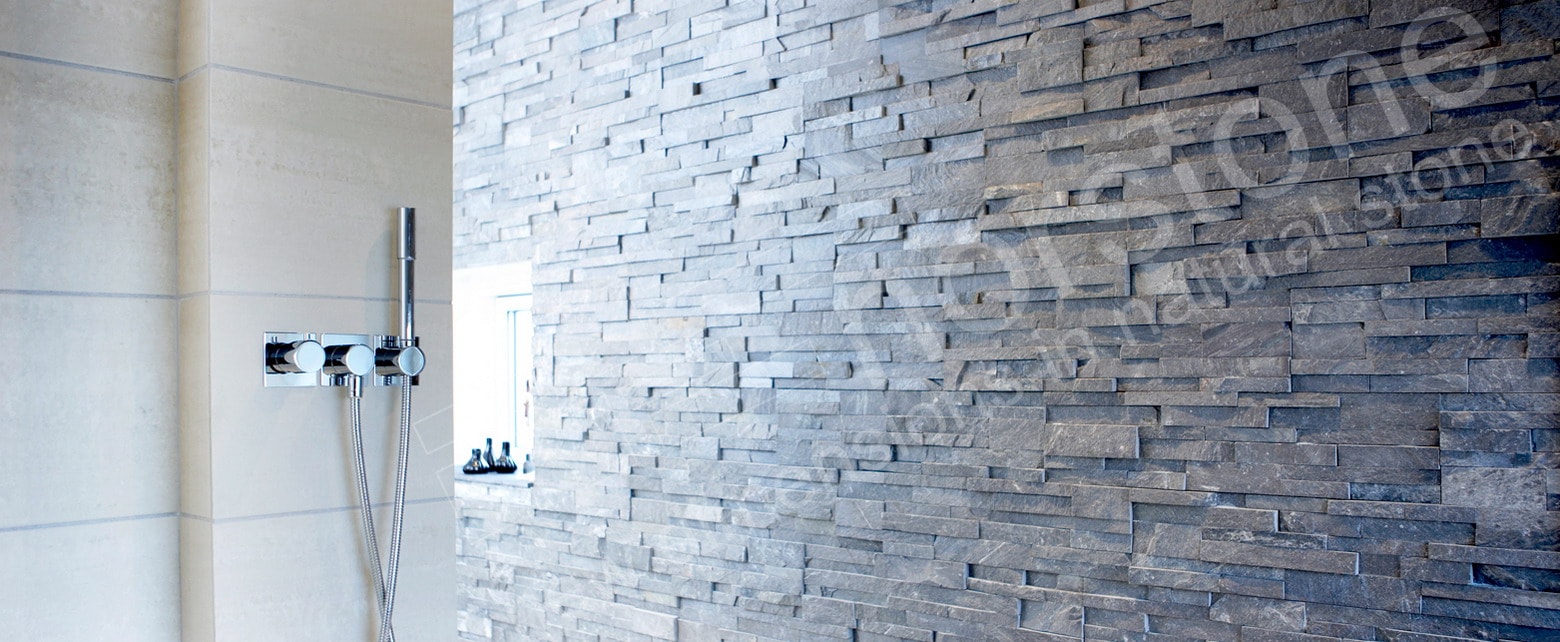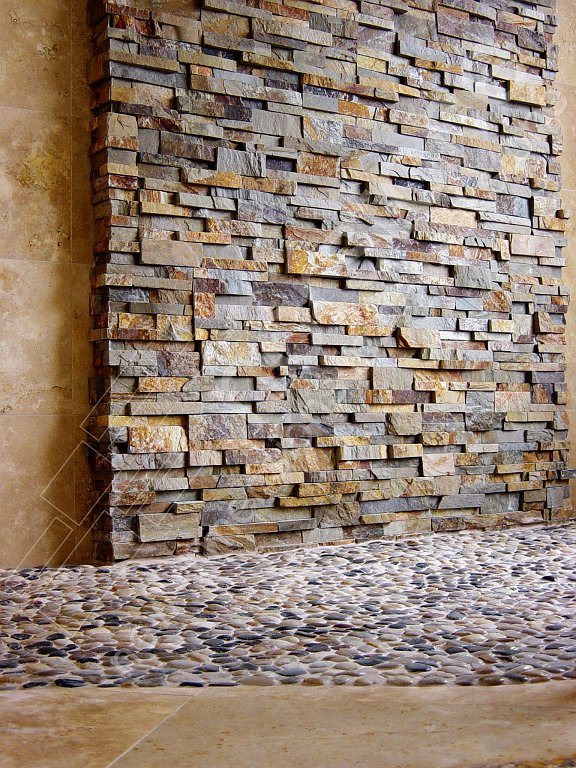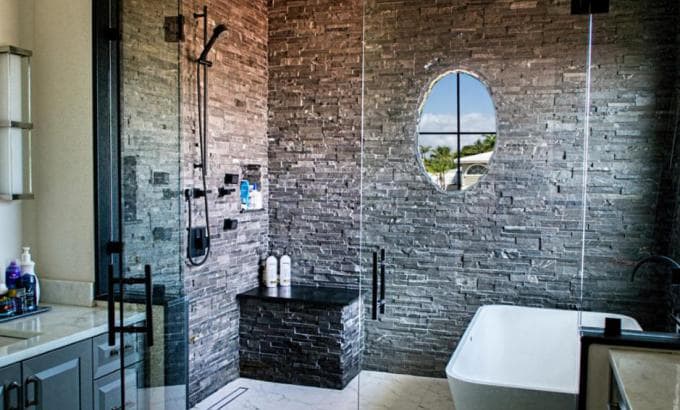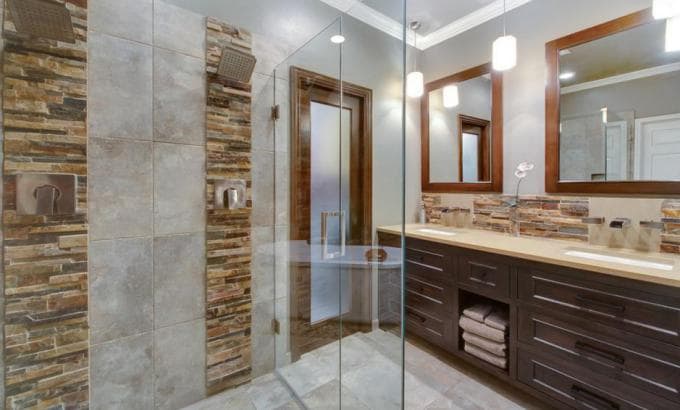How to Install Stacked Stone in a Shower
Open up any architectural or design magazine or tour a new construction model home and one of the trends you’ll notice is master bathrooms getting bigger and bigger. With the middle to high end homebuyer seeking out both spacious tubs and showers fitted out with spa like finishes, the master bath, and in particular the shower stall, is an area we find our stacked stone veneer products showing up in more and more often.

For the early adopters of this trend, there were some fairly basic questions that needed answered about how stacked stone could be used in a shower. After all, our stacked stone panels are created and installed on a dry stack concept, where the stone is neatly cut and but up against the surrounding stones, but in no way does that form a watertight seal to keep moisture out. And since we’re working with natural stone to begin with, which tends to be very porous, the big question people had was how do we prevent water from getting behind the stone and into the wall cavity, possibly destabilizing the installation and causing moisture problems in surrounding rooms, and even creating health problems related to mold and mildew.
The solution to the problem is a multi pronged approach starting with substrate preparation, using the right bedding and setting materials, and then simple ongoing maintenance steps.
The real key to the moisture problem a stacked stone wall in a shower presents is using the correct substrate. Cement board, or similar anti microbial tiling board designed for vertical tile installations is the perfect starting point to cover the framing. The next, and possibly most important step in the entire installation is the application of a waterproofing membrane. Waterproofing membranes are important for many tile installations and can be either sheet membranes or fluid applied membranes that roll on like thick paint. This layer serves a vital step of ensuring that water that does pass through the stone does not get past the membrane and into the wall cavity where it can cause problems. The membrane should overlap the shower pan to allow gravity to take its course and manage the flow of moisture away from the walls.

The stacked stone veneer should be applied to the prepared substrate using a polymer modified thinset, and since moisture is a concern in shower installations, an anti-microbial thinset is recommended. Anti-microbial thinsets are designed by setting material manufacturers to help prevent the growth of mold and mildew and as part of a whole installation system are effective at doing so.

Once the stacked stone is successfully installed, a quality natural stone sealer should be applied to the wall prior to putting the shower to use. One thing important to understand with sealers is that a sealer doesn’t form a waterproof layer or barrier of protection. The main function of the sealer is to treat the stone and make it harder for any staining, or in the case of a shower, mold or mildew to form on the surface of the stone. Natural stacked stone veneer should be periodically resealed according to the timeline provided by the seal manufacturer.
One final, and often overlooked ongoing maintenance tip for a stacked stone shower wall is to always run the exhaust vent in the bathroom during and after a shower. The exhaust vent is an effective tool at evacuating the steamy/ moisture rich air created during a shower. By removing this warm and moist air from the space you greatly inhibit mold and mildew growth.

Stacked stone shower walls are a statement piece in any master bathroom, but one of the things we tell all of our clients that are considering this type of application is that they should understand that this is not a maintenance free installation. From remembering to run the exhaust fan, to regular cleanings, to periodic re-sealings, the maintenance of a stacked stone shower wall isn’t terribly hard or time consuming, but definitely necessary to keep an installation looking great. Thanks for taking the time to learn more about using stacked stone veneer in a shower application. Contact any of our in house design experts to discuss how stacked stone, or any of our natural stone wall tile products can be a good fit for you next shower project!
.png)



